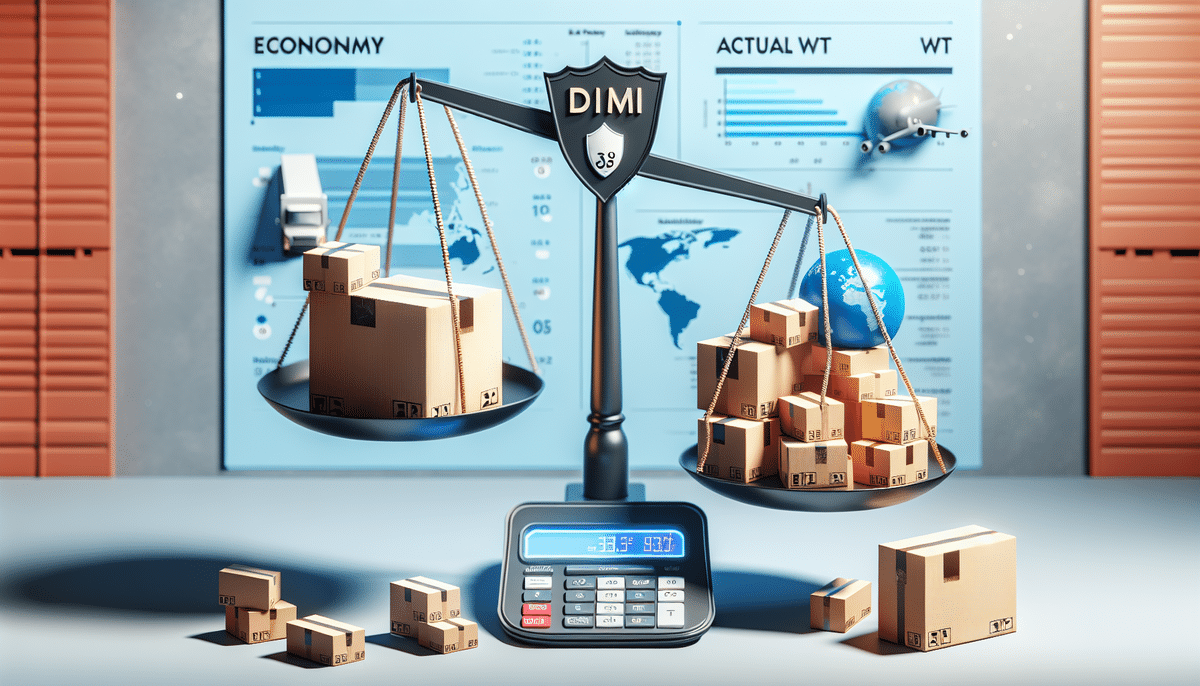Understanding UPS Shipping Rates: A Comprehensive Guide for Small Businesses
If you are a small business owner or an e-commerce entrepreneur, you know how crucial shipping is to your operations. Shipping rates can significantly impact your business's bottom line and customer satisfaction. Grasping the complexities of shipping rates, especially UPS shipping rates by weight, is essential for optimizing costs and ensuring timely deliveries.
How Do UPS Shipping Rates Work?
UPS shipping rates are determined by several factors, including the package's weight, destination, dimensions, and the chosen shipping service type. Understanding these components can help you make informed decisions to minimize costs.
Weight as a Determining Factor
One of the primary factors influencing UPS shipping rates is the package's weight. Heavier packages require more fuel and handling, resulting in higher shipping costs. UPS measures weight in either pounds or kilograms, rounding up to the nearest whole number. For instance, a package weighing 2.2 pounds will be rounded up to 3 pounds for rate calculations.
Destination-Based Pricing
The destination of your package also plays a significant role in determining shipping rates. Shipping to remote or rural areas typically costs more than shipping to major urban centers due to additional transportation and handling requirements.
Shipping Service Types
UPS offers various shipping services tailored to different needs. Faster services like UPS Next Day Air or UPS 2nd Day Air come at a premium compared to economical options like UPS Ground. Additional services such as signature confirmation or Saturday delivery may incur extra fees.
The Importance of Weight in UPS Shipping Rates
Weight is a crucial element in UPS's rate calculations. Ensuring accurate weight measurements is vital to avoid unexpected costs. UPS also considers dimensional weight (DIM weight), which factors in the package's volume. If the DIM weight exceeds the actual weight, UPS uses DIM weight to calculate the shipping rate.
For example, a package with an actual weight of 10 pounds but large dimensions that equate to a DIM weight of 30 pounds will be charged based on the higher DIM weight. Accurate packaging can help mitigate these additional costs.
Types of UPS Shipping Services
UPS provides a range of shipping services to accommodate various business needs:
- UPS Ground: An economical choice with longer delivery times, suitable for non-urgent shipments.
- UPS 2nd Day Air: Provides delivery within two business days, balancing speed and cost.
- UPS Next Day Air: Guarantees overnight delivery, ideal for urgent shipments.
- UPS Worldwide Express Freight: Designed for international heavy freight shipments.
- UPS My Choice: Offers customizable delivery options, such as changing the delivery date or location.
Choosing the right service depends on your specific needs, including delivery speed, budget, and destination.
Calculating UPS Shipping Costs by Weight
To calculate UPS shipping costs accurately, consider the following:
- Package Weight and Dimensions: Accurate measurements are essential to ensure correct rate calculations.
- Destination: Shipping zones affect the overall cost, with farther destinations incurring higher rates.
- Service Type: The selected shipping service influences both cost and delivery speed.
Utilize the UPS Shipping Calculator on the UPS website for real-time rate estimates. Keep in mind that actual costs may vary due to additional surcharges and fees.
Strategies to Reduce UPS Shipping Costs
Implementing cost-saving strategies can enhance your business's profitability. Here are some effective methods:
- Optimize Packaging: Use appropriately sized boxes or envelopes to minimize weight and avoid dimensional weight charges.
- Select Economical Services: Choose the most cost-effective shipping service that meets your customers' delivery expectations.
- Lightweight Packaging Materials: Utilize materials like air pillows and bubble wrap to protect products without adding excessive weight.
- Consolidate Shipments: Combine multiple orders going to the same location to reduce overall shipping costs.
- Leverage Shipping Software: Use software solutions to negotiate better rates with UPS and other carriers.
These strategies not only reduce shipping expenses but also enhance operational efficiency and customer satisfaction.
The Impact of Distance on UPS Shipping Rates
UPS shipping rates increase with the distance between the origin and destination. UPS divides the country into shipping zones, with rates escalating in higher zones. Opting for UPS Ground for longer distances can be more economical compared to expedited services.
Additionally, businesses that ship frequently or in large volumes may qualify for discounted rates, further reducing costs associated with longer-distance shipments.
Choosing the Right Packaging to Save on Weight and Cost
Proper packaging is essential for minimizing shipping costs:
- Fit for Purpose: Select packaging that fits the product dimensions to avoid dimensional weight charges.
- Lightweight Materials: Use materials like poly mailers or lightweight boxes that provide adequate protection without adding unnecessary weight.
- Eco-Friendly Options: Consider reusable or recycled packaging to reduce costs and environmental impact.
- Avoid Overpackaging: Excessive packaging increases weight and shipping costs unnecessarily.
For fragile items, ensure adequate protection using cushioning materials such as bubble wrap or foam inserts. This prevents damage during transit and avoids potential returns or replacements.
The Role of Dimensional Weight in UPS Shipping Rates
Dimensional weight (DIM weight) accounts for the package's volume, not just its actual weight. UPS calculates DIM weight by multiplying the package's length, width, and height and dividing by a specific divisor. If DIM weight exceeds actual weight, UPS charges based on DIM weight.
To avoid higher charges:
- Optimize Package Dimensions: Use appropriately sized boxes to reduce DIM weight.
- Minimize Empty Space: Fill empty spaces with lightweight void fillers to prevent dimensional weight penalties.
Accurate measurement and thoughtful packaging design can help control both actual and DIM weight, ensuring cost-effective shipping.
Comparing UPS Shipping Rates with Other Carriers
Comparing UPS rates with other carriers like FedEx, USPS, and DHL can help you find the most cost-effective shipping option:
- FedEx: Often competitive with UPS for certain weight ranges and delivery speeds.
- USPS: May offer more economical rates for lighter packages and smaller businesses.
- DHL: A strong option for international shipping with competitive rates and extensive global coverage.
Use shipping comparison tools or software to evaluate rates, delivery times, and service reliability to select the best carrier for your specific needs.
Negotiating Better Pricing for Your UPS Shipments
Businesses with high shipping volumes can negotiate better rates with UPS:
- Demonstrate Shipping Volume: Present your shipping history and data to UPS to highlight your volume.
- Request Discounts: Ask for volume-based discounts or customized pricing agreements.
- Utilize UPS Tools: Take advantage of UPS's online resources and business solutions to optimize costs.
Additionally, consider entering long-term contracts or exploring alternative shipping methods to secure more favorable rates. Regularly reviewing and adjusting your shipping strategies can lead to significant cost savings.
Best Practices for Managing UPS Shipping Costs
Effective management of UPS shipping costs involves continuous optimization and strategic planning:
- Regular Expense Reviews: Monitor your shipping expenses to identify and eliminate inefficiencies.
- Optimize Packaging: Consistently use the right packaging to minimize weight and avoid surcharges.
- Implement Shipping Software: Streamline operations and negotiate better rates with automated tools.
- Transparent Communication: Clearly communicate shipping costs to customers to maintain trust and avoid misunderstandings.
By adopting these best practices, you can effectively manage and reduce your UPS shipping costs, enhancing your business's profitability and customer satisfaction.
Conclusion: Mastering UPS Shipping Rates for Business Success
Understanding and optimizing UPS shipping rates by weight is fundamental for any business that relies on shipping products. By accurately calculating costs, selecting appropriate shipping services, and implementing cost-saving strategies, you can enhance your profitability and ensure customer satisfaction.
Stay informed about the latest shipping trends and continuously seek ways to optimize your shipping processes. Leveraging tools, negotiating better rates, and choosing the right packaging can make a substantial difference in your shipping expenses and overall business success.






















